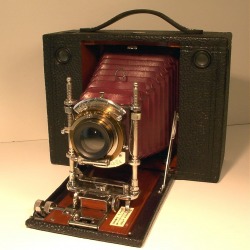Cause and Effect
Skyscrapers:
Thanks to the invention of the Bessemer Process (Henry Bessemer, 1850) we have found new, faster, and better ways of making steel. Thanks for those new and faster ways to make steel and also the invention of elevators, we have been able to make skyscrapers. Skyscrapers are built manly from steel frames (William Le Baron Jenney), and really have no limit of how high they can really go. Skyscrapers have helped by creating large business buildings where there is plenty of room for lots of workers.
Electric Transit:
Electric transit was born in the city of San Francisco, thanks to all of the hills. Andrew S. Hallidie invented the first cable car, which was operated on a cable line with two rails. What the cable car did was transport people up and down the hills of San Francisco. Electric trolleys ran from neighborhoods to business offices, railroads went from suburbs to inner city businesses (100,000 commuters/day), and New York built underground railways (subways). Cable cars are still in use today, all the way from trolleys in San Francisco to Subways in New York.
Engineering:
Thanks to the invention of steel, steel cable suspensions were used to create bridges, transporting cars across rivers, oceans, and etc. One famous bridge is the Brooklyn Bridge, which opened in 1883. City parks also became popular, with the opening of Central Park in 1857. Parks encouraged boating, tennis, bike paths, and a "natural" setting. Thanks to the creation of these two things, people can either drive across the bridges in their Model-T's or take a stroll through a park.
Printing:
With the invention of paper, we have been able to produce newspapers. Thanks to printers, we have been able to print paper on both sides, rather than just one. People were able to buy newspapers for only 1 cent. Newspapers are a good and cheap way to stay up to date with the latest news, gossip, comics, and etc. without having to go out and by an expensive television. Anywhere you go, you can buy a newspaper for very cheap.
Airplanes:
Orville and Wilbur Wright introduced the world of flight to us in the year of 1903, with a plane that glided. This "glider" went 10ft. /sec. Two years later, they were able to travel 24 miles. The first transcontinental air mail service took flight in the year of 1920. With the advance in airplanes, we are able to go anywhere in the world in a short amount of time. It has made traveling faster and shorter, and mail can get from coast to coast in half the time.
Photography:
Before the 1880's, photography was strictly professional. Thanks to George Eastman, photography was more convenient. He used flexible film, it was coated with gelatin emulsions, and you could send it to the studio to be developed. In 1888, Eastman introduced the first Kodak camera. With the introduction of the Kodak Camera brought the introduction of photo journalism. Cameras today have become way more high tech, allowing us to send them to our computer and print them straight from home. We can go on the internet and get pictures; we can read in newspapers and see many pictures of people, things, and etc.
Flatiron Building
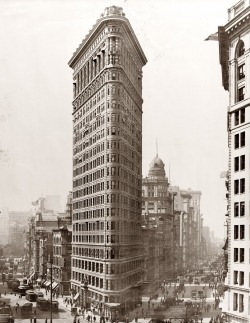
Early San Francisco Streetcar
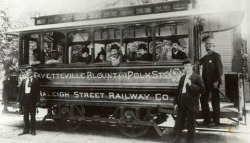
1900 Printing Press
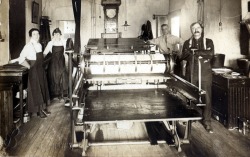
Wright Brother's First Plane
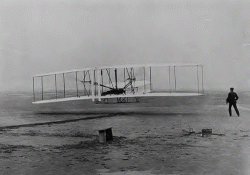
1900 Kodak Camera
